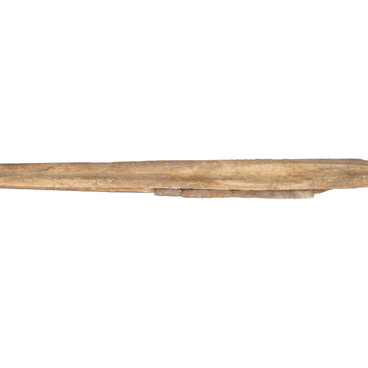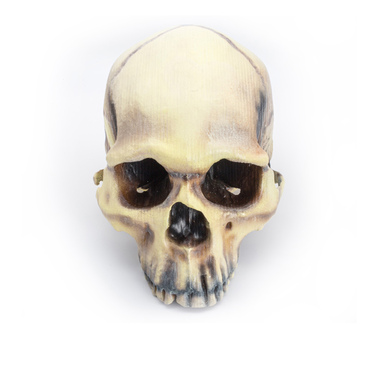The fragment of a mouth (the so-called upper edge of the neck) of a ceramic pot is housed in the collection of the Regional Museum of Local History. The fragment was discovered in 1960 during an archaeological expedition led by archaeologist Herman Medvedev at the Ust-Belaya site. The find was dated to the Neolithic period: the jar was created about 4.6-7.5 thousand years ago.
Ceramic pots appeared simultaneously in many regions. Scientists factored this in when they determined the periodization of the Early Neolithic era, since in the previous epoch (Mesolithic), such finds are rare. With the Neolithic era, a large number of various pots appeared, along with other changes in human life. When ceramics appeared, people began to invent new ways of cooking and trying those products that could only be eaten boiled or baked.
Some scientists have suggested that ceramics was the first way for people to change the structure of the fabricating material. People learned how to make a solid and moisture-proof object from a dry, loose and free-flowing substance.
Initially, ceramics were made by hand, from local clay. Impurities that kept the products from cracking during thermal heating were added to it: talc, asbestos, sand, crushed shell, gravel (coarse sand) and even plants; the exact ingredients depended on the region. Later, people invented the potter’s wheel, and this greatly simplified the process of pottery making. Household utensils were also made out of ceramics: spinning wheels, sinkers and small figurines.
Neolithic jars of various shapes were found in Siberia: round-bottomed and pointed-bottom pottery. Most likely, this was due to cooking over a fire: it was more convenient to put pots with a pointed bottom between stones or into small pits around which a fire was built.
It is not known what the shape of the jar from the Museum’s collection was; only a fragment of the neck has been preserved. However, on the outer surface of the pot, one can see stamped impressions in the form of a mesh or a thin thread-like cord — this was an early method of ornamental design. The researchers believe that the prints on the jars were not simply decorative, but were also used for rites and rituals.
Ceramic pots appeared simultaneously in many regions. Scientists factored this in when they determined the periodization of the Early Neolithic era, since in the previous epoch (Mesolithic), such finds are rare. With the Neolithic era, a large number of various pots appeared, along with other changes in human life. When ceramics appeared, people began to invent new ways of cooking and trying those products that could only be eaten boiled or baked.
Some scientists have suggested that ceramics was the first way for people to change the structure of the fabricating material. People learned how to make a solid and moisture-proof object from a dry, loose and free-flowing substance.
Initially, ceramics were made by hand, from local clay. Impurities that kept the products from cracking during thermal heating were added to it: talc, asbestos, sand, crushed shell, gravel (coarse sand) and even plants; the exact ingredients depended on the region. Later, people invented the potter’s wheel, and this greatly simplified the process of pottery making. Household utensils were also made out of ceramics: spinning wheels, sinkers and small figurines.
Neolithic jars of various shapes were found in Siberia: round-bottomed and pointed-bottom pottery. Most likely, this was due to cooking over a fire: it was more convenient to put pots with a pointed bottom between stones or into small pits around which a fire was built.
It is not known what the shape of the jar from the Museum’s collection was; only a fragment of the neck has been preserved. However, on the outer surface of the pot, one can see stamped impressions in the form of a mesh or a thin thread-like cord — this was an early method of ornamental design. The researchers believe that the prints on the jars were not simply decorative, but were also used for rites and rituals.



